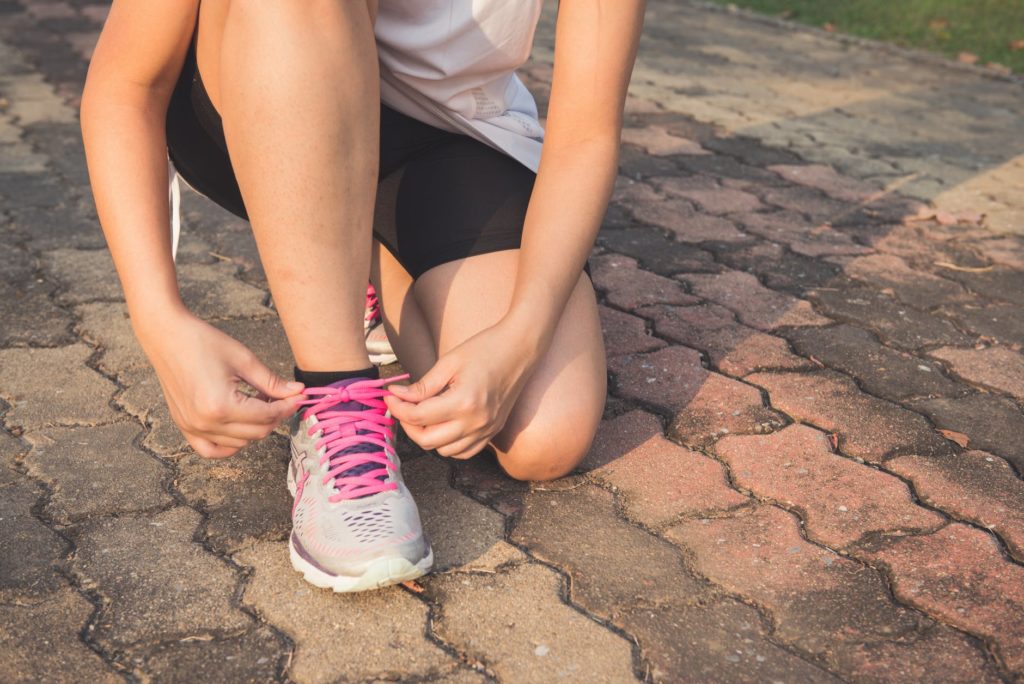Everyone needs to do some form of cardio in order to stay fit and maximize endurance. For boxers, that cardio comes in the form of running (aka road work). Running, in its simplicity, offers the best type of cardiovascular workout there is because it’s something humans have been doing for a very long time, long before bicycles and gyms were invented.
If running isn’t already part of your boxing training, you’re missing out on the most effective way to get in good fighting shape by building endurance. Even if you have no plans to compete as a fighter, running will help you with sparring, keep extra weight off, and help boost leg strength. It’s also excellent for heart health, and it even helps your mood. Barring any joint issues, there’s no reason not to incorporate running into your workout routine, and all you need to get started is a good pair of running shoes.
The first 15 minutes and how to prepare
It’s understandable to feel overwhelmed if you’ve never been a runner before or you’re not in ideal cardio shape. If that’s the case, this article is for you. Here’s how you can get started running TODAY even if you don’t think you can, or just don’t feel like it.
Depending on how much cardio you’re used to, running for the first time (or for the first time in a long time) is going to be more or less difficult. There’s no sugar-coating this: if it’s been months or years since you ran one mile without stopping, running will feel like an uphill battle. But there’s also great news: Much of that difficulty is short-lived.
Most of the struggle you feel doing intense cardio like running is perceived in the first 10-15 minutes. If you can make it through those first 15 minutes, you may be surprised how easy your run feels after that. That’s because your body, even if it’s only in moderate shape (and if you’re reading this, you’re probably in at least moderately good condition) will meet you halfway when you put in the effort. So don’t start out thinking “this is going to be 45 minutes of misery” because it actually won’t be! It’s 10-15 minutes of misery, tops. And you can do almost anything for fifteen minutes.
Finding the best running shoes, and tracking your progress
Now that you’re mentally prepared, grab some good running shoes, a timer, and your favorite playlist. Make sure you pick shoes that are specifically intended for running, as opposed to hiking shoes or designer sneakers that are meant as streetwear. Obviously, also be sure they fit well and are comfortable. If you plan to run outdoors, choose shoes that have solid ankle support for turning curves.
The best running shoes aren’t a specific brand; they’re the shoes that feel good on your feet and hold up well over time. If your feet hurt after a run, you need different shoes. Sometimes it can help to have two pairs that you can alternate, which can help both pairs last longer and also give your feet a break.
While designer sneakers might be stylish, running is an activity that requires comfort over fashion, so don’t go by appearance or skip comfort when picking running shoes. Your feet, knees, and hip joints will all thank you – today and twenty years down the road. Also, consider where you plan to do most of your running. Some shoes are great for flat surfaces like paved roads and treadmills, while trail running might require a shoe with better grips. A few brands to look out for that are favored by runners are Saucony, Hoka, New Balance, and Brooks.

Interval training is the path to running the distance
Set up a simple timer so you can keep track of your time and use an app like your phone’s health app to keep track of your miles. (note: most apps like this record your steps and miles during the day, so you’ll need to keep track of how many steps/miles you traveled before you start your run, and figure out the math.)
On your first day, start by running/walking in intervals. Run for five minutes, then walk for three, and repeat. Or run one mile, walk one mile, etc. You could also run for the duration of a song, then walk for a song. Whatever combination works for you, repeat your intervals for a total duration of 45 minutes. If you end up only running a total of 15 minutes and walking 30, that’s okay!
On days 2, 3, and 4, increase the minutes you spend running. Set your own goals, and even if it’s only by 1 or 2 minutes per session, stick to it. As long as you’re making incremental progress, you’re making progress. Every minute counts, and as you increase your running time, you can gradually run for longer periods, and eventually eliminate the walking.
After doing 5-6 interval sessions over a period of a week or two, try running one mile without stopping, or however long you can. Follow up your mile(s) with walking for the remainder of the 45 minutes. Next time, try running two miles before slowing down to a walk. After six weeks, if you’ve been consistent, you should be able to run 3 miles without stopping or walking. Three miles is actually a great goal for running, although athletes and especially competitive fighters should have a goal of running five miles several days per week in addition to regular boxing training.
Rest. And never give up!
Take resting seriously, because without rest, you won’t progress. The body requires recovery time to rebuild muscle and tissue that is broken down during strenuous exercise. When you’re new to running or any exercise, don’t do the same thing two days in a row. Run one day, and do your strength training the next.
Finally, don’t give up, and don’t give in to that little devil voice in your head that says “you don’t really have time right now….it’s bad for your knees, anyway…..you’re too old….plenty of fighters don’t run……” NO! NOT TODAY, SATAN! Today you are a fighter, you are on the path to victory, and you are going to RUN.
